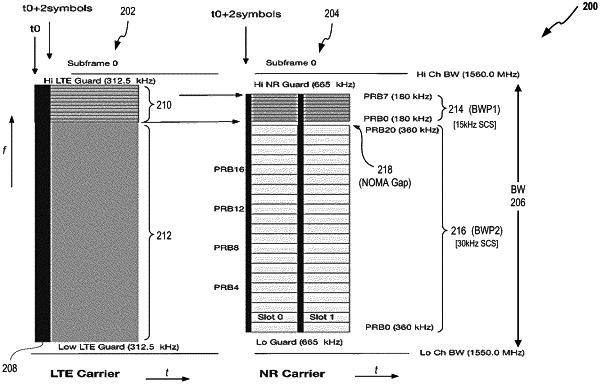| CPC H04W 16/14 (2013.01) [H04L 1/0003 (2013.01); H04L 5/0005 (2013.01); H04W 72/0453 (2013.01); H04W 72/1263 (2013.01); H04W 72/27 (2023.01)] | 9 Claims |

|
1. A method for coordinating co-channel coexistence of a first orthogonal frequency division multiplexing (OFDM) transmission sharing the same resource subframe of a wireless communication channel with a second OFDM transmission configured for non-orthogonal multiple access (NOMA) dynamic spectrum sharing (DSS), the method comprising the steps of:
defining, within a resource bandwidth of the resource subframe, a first bandwidth portion (BWP) and a second BWP that does not overlap the first BWP within the resource bandwidth;
causing a first scheduling unit for the first OFDM transmission to confine the first OFDM transmission to first physical resource blocks (PRBs) allocated within the first BWP;
instructing a second scheduling unit for the second OFDM transmission to allocate second PRBs for the second OFDM transmission to within the second BWP;
dynamically setting a frequency gap between the first BWP and the second BWP, wherein the frequency gap includes a gap depth indicating a difference in frequency between an outermost frequency edge of the first BWP nearest an adjacent outermost frequency edge of the second BWP; and
messaging the second scheduling unit to adjust the gap depth based on channel information of the wireless communication channel obtained by a communication node in operable communication with at least one of the first and second scheduling units.
|